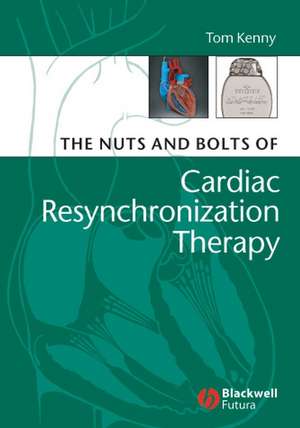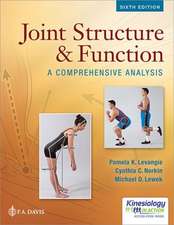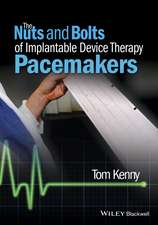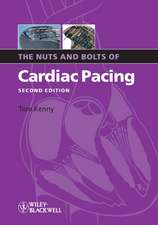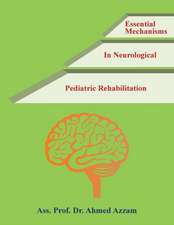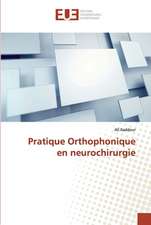The Nuts and Bolts of Cardiac Resynchronization Therapy: Nuts and Bolts Series (Replaced by 5113)
Autor T Kennyen Limba Engleză Paperback – 3 apr 2007
Preț: 458.58 lei
Preț vechi: 482.72 lei
-5% Nou
Puncte Express: 688
Preț estimativ în valută:
87.76€ • 95.29$ • 73.72£
87.76€ • 95.29$ • 73.72£
Carte tipărită la comandă
Livrare economică 22 aprilie-06 mai
Preluare comenzi: 021 569.72.76
Specificații
ISBN-13: 9781405153720
ISBN-10: 1405153725
Pagini: 226
Dimensiuni: 178 x 254 x 12 mm
Greutate: 0.41 kg
Editura: Wiley
Seria Nuts and Bolts Series (Replaced by 5113)
Locul publicării:Chichester, United Kingdom
ISBN-10: 1405153725
Pagini: 226
Dimensiuni: 178 x 254 x 12 mm
Greutate: 0.41 kg
Editura: Wiley
Seria Nuts and Bolts Series (Replaced by 5113)
Locul publicării:Chichester, United Kingdom
Public țintă
CRT is a great new therapeutic option that has the potential to improve and save lives for heart failure patients. But there are some things many clinicians already know about this new device–based therapy:1. It s tough to implant – CRT devices require the placement of a left–ventricular lead which is challenging, even to regular device implanters.
2. It s harder to understand – If dual–chamber timing cycles are hard for clinicians to grasp, imagine trying to synchronize the activities and interacting timing cycles on three leads. CRT systems create unusual–looking ECGs which most untrained clinicians cannot read. Basic pacing functions like capture and sensing are hard to sort out.
3. There is an emerging minority of CRT patients now dubbed non–responders who are turning out to be optimizers. That is to say, some patients will not respond well to CRT until device settings are carefully reprogrammed ( optimized ) using some pretty elaborate techniques (often involving echocardiography or other imaging technologies). For clinicians who did not like troubleshooting simple pacing systems, the thought of optimizing a CRT device seems pretty daunting.
This book is aimed at the educated clinician who is not necessarily familiar with device therapy at all as well as those comfortable with pacemakers and defibrillators who wish to learn about CRT systems in specific.
There is an urgent need for this book. Physicians specializing in general practice, internal medicine, gynecology, urology, endocrinology, and other areas are all treating patients with heart failure. More and more of these heart failure patients will seek care, and they will increasingly have CRT systems implanted. It is going to be crucial for general and non–specialized practices to be able to understand CRT (even if that clinic never intends to implant a CRT system itself).
